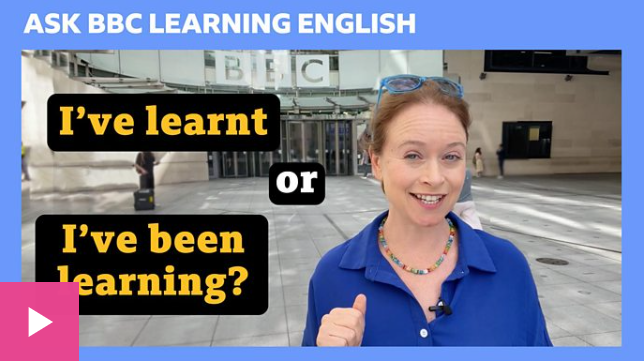Introduction
Juan has sent us a question. He wants to know the difference between present perfect simple and present perfect continuous.
Sian’s 5 differences!
1. The present perfect simple emphasises that an action is complete while the present perfect continuous can emphasise an action is ongoing and may continue in the future.
- My chocolates have been eaten. There are none left! (present perfect simple)
- Someone’s been eating my chocolates. There’s only a few left! (present perfect continuous)
2. The present perfect simple is used to focus on the result of an action. The present perfect continuous is used to focus on doing the action.
- I’ve chopped the onions. What can I do next? (present perfect simple)
- I’m not crying. I’ve just been chopping onions. (present perfect continuous)
3. Use the present perfect continuous when you can see evidence of a recent action that is now finished.
- I’ve been cooking all day, so the kitchen’s a mess. (present perfect continuous)
4. Use the present perfect simple to talk about how many or how often. Use the present perfect continuous to talk about how long – this is often used with phrases like all morning, all day, for ages etc. But we don’t use the present perfect continuous with state verbs e.g. know, believe, need etc.
- It’s rained every day this week. (present perfect simple)
- It’s been raining all day! (present perfect continuous)
5. Use the present perfect continuous to emphasise that a situation is temporary.
- I’ve broken my leg, so I’ve been working from home recently. (present perfect continuous)
Thanks to Juan studying at the English school EC London for participating in this video.
